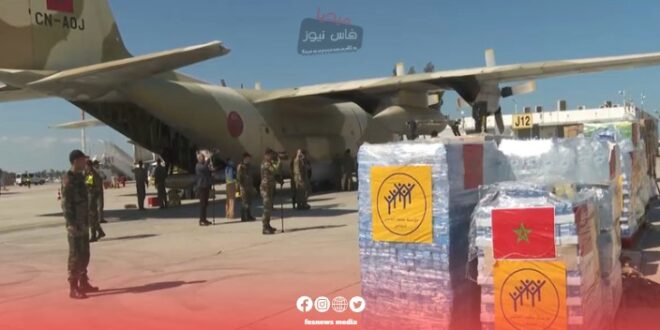On Thursday, the United Nations Security Council called on Israel to step up its efforts in delivering humanitarian aid to the Gaza Strip, where an “imminent famine” looms.
Israel has recently highlighted an increase in the number of trucks entering Palestinian territories. However, humanitarian organizations still deem these efforts insufficient. Here’s an overview of the route of these shipments:
Arrival via Egypt and Inspection
Humanitarian aid typically arrives in Egypt through the ports of Port Said or al-Arish. However, al-Arish, which is closest to Gaza, quickly becomes congested due to its small size. In order to increase deliveries, Israel announced new arrangements on April 5th, with Defense Minister Yoav Gallant mentioning the arrival of aid through the port of Ashdod, located south of Israel and near Gaza, as well as a new land passage. The authorities have not specified a timeframe. Currently, most trucks enter through the Rafah crossing on the Egypt-Gaza border and wait for several days in an area with a capacity of around 50 places, deemed insufficient by NGOs. The shipments must then undergo thorough inspections, involving time-consuming back-and-forth trips to inspection points in Israel, namely Kerem Shalom and Nitzana.
Entry into Southern Gaza
Authorized products are unloaded in the area between Egypt and Gaza, then loaded onto other vehicles driven by Palestinians working for NGOs for distribution in the territory. Stringent inspections are cited as the main reason for the slow delivery by NGOs, while Israeli authorities mention the inability of these organizations to handle the quantities of aid. “We have adapted and improved our aid delivery mechanisms; UN aid agencies must do the same,” stated the Israeli office responsible for Palestinian affairs, COGAT, on Thursday. Israel reported on Tuesday that 468 trucks were admitted to Gaza, the highest number since the start of the war, aiming for a soon-to-be daily average of 500, according to Gallant. However, UN figures often differ, with a spokesperson for the UN Office for the Coordination of Humanitarian Affairs (OCHA) in Geneva emphasizing on Tuesday that trucks entering Gaza are only half full, a requirement imposed by Israel to facilitate inspections, according to him.
Insufficient Aid for the North
Delivery of aid from southern Gaza to the northern territory, where the humanitarian crisis is most acute, is extremely complex due to destruction and conflict. Some convoys, including those from the World Food Programme, have been barred by Israeli authorities. Some have also been looted on the road by crowds of Palestinians described by NGOs as “starving.” Israel announced on April 5th that the Erez crossing point between Palestinian territory and southern Israel, currently closed, would be used to pass aid. It was destroyed by Hamas militants on October 7th. However, according to Israeli media on Thursday, the Israeli government is seeking an alternative to Erez for security reasons and intends to open an access point in the nearby town of Zikim to directly access northern Gaza.
Air and Sea
Several countries (United States, Jordan, United Arab Emirates, France, Belgium, etc.) conduct aerial drops, particularly in the north. The opening of a maritime corridor between Cyprus and Gaza allowed a ship carrying 200 tons of food to arrive in March. The cargo underwent “comprehensive” inspection by Israeli authorities at the Cypriot port of Larnaca, according to the Spanish NGO that owns the ship, Open Arms. The US military is also set to build a pier and dock in Gaza to unload aid on a large scale. Four US warships left the United States in early March with a hundred soldiers and necessary equipment. Despite the low and irregular quantities and the significant danger of drops in densely populated areas, these initiatives are not deemed satisfactory by international organizations and Gazans.
From: Fez News website
 فاس نيوز ميديا جريدة الكترونية جهوية تعنى بشؤون و أخبار جهة فاس مكناس – متجددة على مدار الساعة
فاس نيوز ميديا جريدة الكترونية جهوية تعنى بشؤون و أخبار جهة فاس مكناس – متجددة على مدار الساعة













